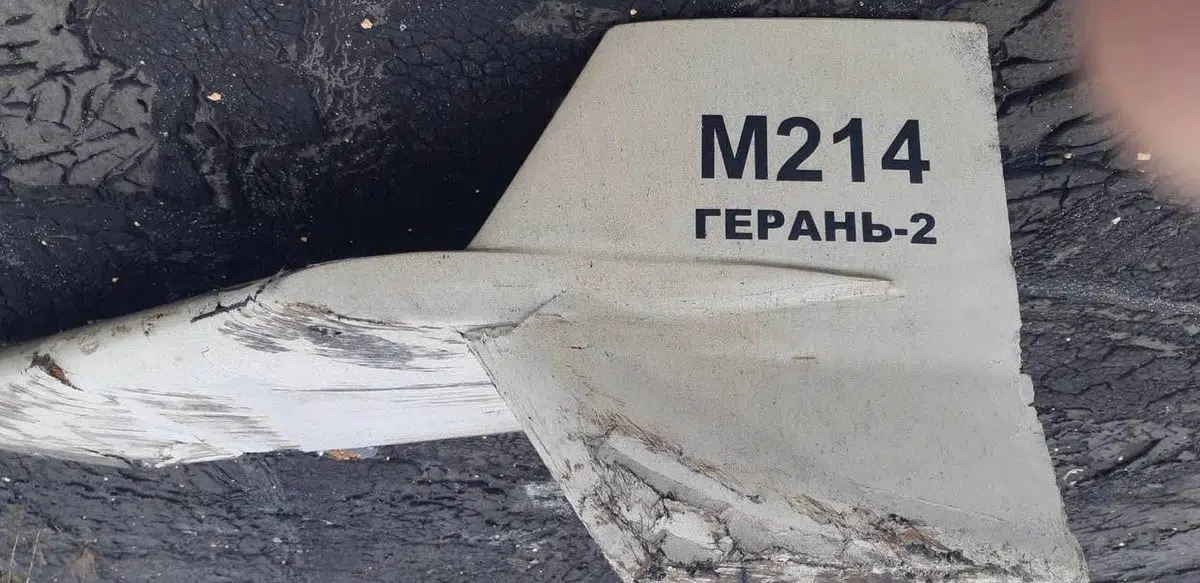
An Iranian drone downed in Ukraine was constructed with parts made by multiple US and Western companies according to a Ukrainian intelligence report which was passed on to the US.
Russian forces have been using drones, artillery, and airstrikes to pummel Ukraine since February of last year. Speculation has been growing since around October that Russia has been using Iranian-made drones, also referred to as unmanned aerial vehicles (UAVs).
In December, the Biden administration launched a task force to investigate how US and Western-made components were ending up in Iranian-made drones.
US and Western components in Iranian drones
According to a report by CNN, Ukrainian intelligence recovered and assessed a Shahed-136 drone that was downed in Ukraine. Of the fifty-two components that were removed and examined, forty of them appear to have been manufactured by thirteen different companies in the US.
The remaining twelve parts were likely made by manufacturers in Canada, Switzerland, Japan, Taiwan, and China. The components include semiconductors, GPS modules, and engine parts.
The HESA Shahed-136 is manufactured by Shahed Aviation Industries in association with the Iran Aircraft Manufacturing Industries Corporation (HESA). The Iranian-made drone is a loitering munition, which means it will wait passively in the general vicinity of a target until it is spotted.
When the target is spotted, the loitering munition, also called a kamikaze drone, then launches itself at the enemy, destroying both the target and itself. The Shaed-136 is estimated to carry a thirty to forty kilogram (66 to 110 pound) warhead.
The drone is believed to come in four configurations: anti-personnel and armored vehicle, anti-fortification, radar seeker, and aerial reconnaissance.
Sanctions and enforcement
The US government has made a sustained effort to try and prevent Iran from acquiring components for weapons production. For example, HESA has been on the US sanctions list since 2008.
However, as the discovery and analysis of the downed drone in Ukraine demonstrates, HESA and other Iranian manufacturers are still able to obtain the components they need to produce weapons systems and aircraft.
It is unlikely that the US and Western manufacturers knowingly provided Iran with the parts to assemble the drones. It is therefore also improbable that any of these firms have deliberately contradicted sanctions imposed on Tehran by Washington.
The US has already imposed tough export controls on relevant materials and components, although these still seem to be available to state actors that Washington deems hostile. Further measures to encourage companies to monitor their supply chains may be introduced.
The key challenge for the US is monitoring third-party distributors who make it possible for actors like Iran and Russia to purchase prohibited parts despite sanctions. It is also relatively easy for Iran and Russia to set up shell companies to purchase parts and avoid detection.
Drone strikes in Ukraine
The most pressing concern for Washington is that Russian forces are using Iranian-made drones to strike targets in Ukraine. The alleged use of US and Western-made components in these drones could be embarrassing for the US, which has been providing military and economic assistance to Ukraine.
Russia has been using artillery, airstrikes, and kamikaze drones to strike Ukrainian targets. This has become increasingly prevalent as the colder months have progressed and the pace of fighting on the ground has slowed.
In particular, Russian forces have been targeting Ukraine’s energy infrastructure to limit the country’s capacity to provide heating and light during the winter and autumn periods.
Kyiv has prioritized bolstering its air defenses. Much of this is dependent on the provision of foreign military equipment. During President Volodymyr Zelensky’s visit to Washington in December, the US pledged to provide a Patriot missile system battery.
The Ukrainians have also been actively counterattacking, and they reportedly killed hundreds of Russian servicemen during a missile strike on New Year’s day.
See all the latest news from Greece and the world at Greekreporter.com. Contact our newsroom to report an update or send your story, photos and videos. Follow GR on Google News and subscribe here to our daily email!



